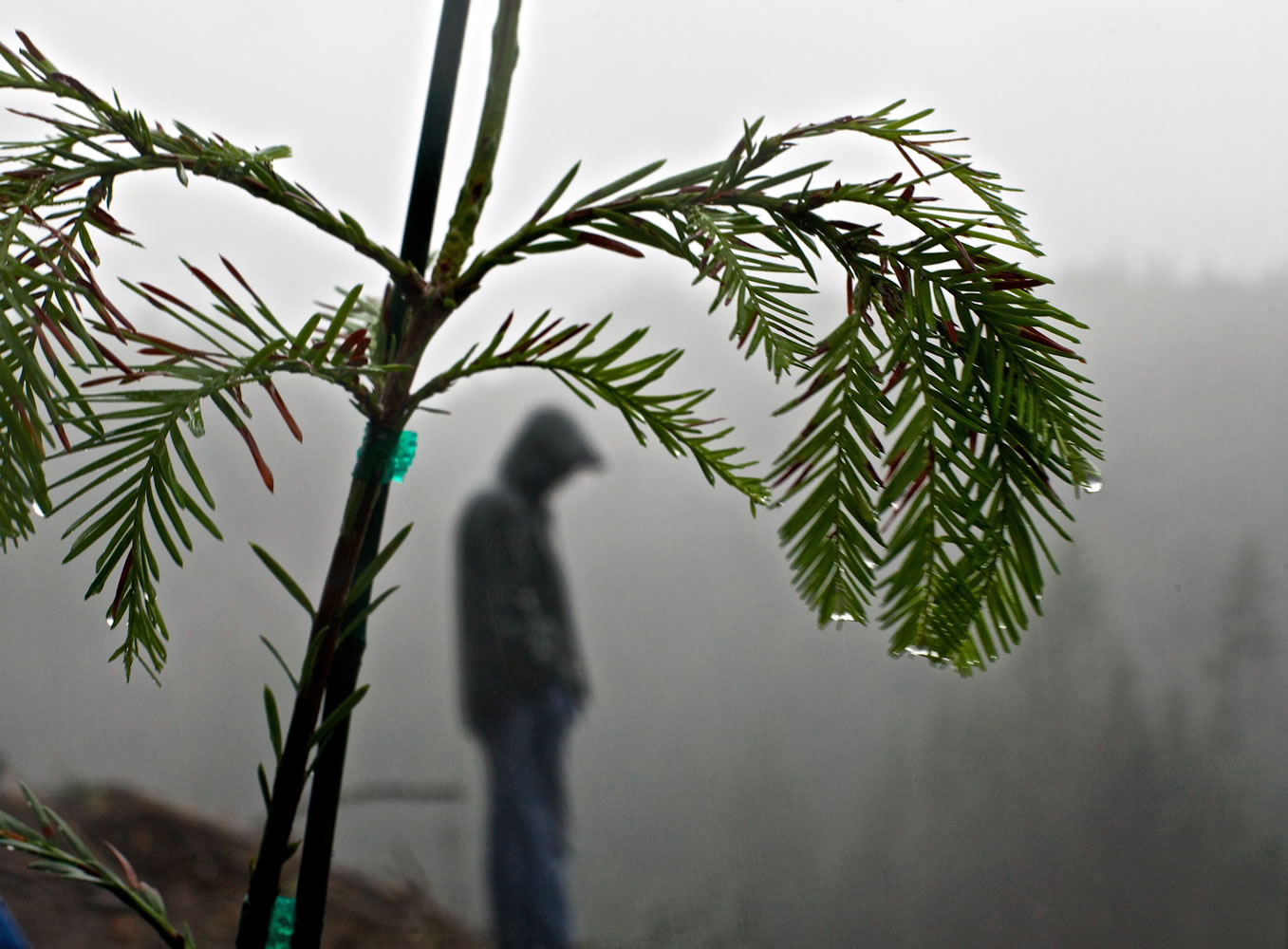A Michigan nurseryman and his team of tree climbers and horticulturists have cloned the world’s biggest redwoods and giant sequoias, bringing some of them back from stumps cut more than 100 years ago.
With the winter rains has come the time to plant. Two hundred and fifty clones carrying an exact genetic copy from 18 different trees — many of them bigger when they lived than anything left standing today — will start going into the ground Tuesday at a ranch on the southern Oregon Coast.
David Milarch, co-founder of the Archangel Ancient Tree Archive and the Champion Tree Project, hopes the small plantation south of Port Orford, Ore., will give the ancient giants a leg up on moving north to cooler climes as the climate changes and be the start of a campaign to plant some of the world’s fastest-growing trees all around the globe.
“I think we are entering into a time where the largest, oldest living beings on this earth need our help,” said Milarch, 63, of Copemish, Mich.
Only about 5 percent of the ancient redwoods are left standing, and among the sources of the clones is one that fell some 120 years ago — the Fieldbrook Stump near McKinleyville, Calif. Sprouts still come out of the stump, 331/2 feet in diameter without the bark. One of those sprouts provided cuttings for the project.
Milarch; his two sons, Jake and Jared; and giant redwood hunter Michael Taylor have been gathering cuttings for years. They ship them to Bill Werner, a native plant propagator in Monterey, Calif. Werner roots the cuttings and starts them growing.
Bill Libby, a professor emeritus of forestry, genetics and natural resources conservation from the University of California at Berkeley, is amazed by Werner’s ability to grow clones from trees that were thousands of years old when they stood. “Bill proved me wrong when I told him he couldn’t clone anything over 100 years old for giant sequoia, and he did it for one over 1,000,” said Libby, an adviser to the Archangel Tree Archive and part of the Save the Redwoods League climate change initiative.
Moving the species
The clones will be planted on Terry Mock’s 150-acre Ocean Mountain Ranch. Mock is a former director of the Champion Tree Project and is turning the ranch into a demonstration of sustainable development. They will go into the ground on the sheltered north slope of a ridge about a mile from the coast near Humbug Mountain. The site is about 40 miles north of the northern tip of the coast redwood’s range, and about 700 miles north of the sequoias in California’s Sierra Nevada.
“As things get hotter and drier, redwoods and sequoias should migrate north,” Mock said.
The project will help with a couple of questions scientists have, Libby said. One is how much genetics has to do with whether a tree gets really big, compared to getting lucky by growing on a site with the right soil, water and sun. The other is finding the places coast redwoods and giant sequoias will thrive as the climate changes.
He is encouraged by the performance of a clone of the world’s tallest redwood growing in his backyard in Orinda, Calif.
“It’s a little over 30 years old and 100 feet tall,” Libby said. “It’s growing like crazy. It is outgrowing the others around it.”



